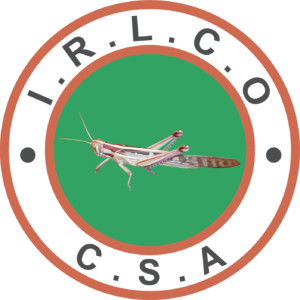Dedicated to Managing Migratory Pests and Ensuring Food Security
About Us
Committed to Combating IRLCO-CSA Infestations
The International Red Locust Control Organisation for Central and southern Africa (IRLCO-CSA) is an institution that was founded in the wake of the one of the most extensive, and best studied, locust plagues the African continent has ever suffered. The Organisation emerged as a testament to successful international cooperation in addressing a shared challenge. Founded in 1970, IRLCO-CSA succeeded the International Red Locust Control Service (IRLCS), which was established in 1949 following one of the most severe and well-documented locust plagues in Africa from 1929 to 1944.
The IRLCS was established by an international convention signed by the Governments of United Kingdom, Portugal and Belgium on behalf of their colonies. This coalition was later joined by the independent states of Botswana, Kenya, Lesotho, Malawi, Tanzania, Uganda, Zambia, Burundi, Rwanda, Zaire, Mozambique and Angola.
Originally headquartered in Abercon (now Mbala) in the Northern Province of Zambia, IRLCO-CSA was later moved to Ndola, Zambia in 1986. The organization operates strategic bases in Beira (Mozambique), Zomba (Malawi), and Tabora (Tanzania), positioned near key red locust outbreak zones. In addition, IRLCO-CSA maintains airstrips in Tanzania at Masenge near Wembere Plains, Kaliua near Malagarasi Basin, and Muze near Rukwa plains, ensuring rapid response capabilities.
Our Objectives
- Monitoring and forecasting pest populations.
- Coordinating control measures across member states.
- Promoting environmentally friendly control techniques.
- Conducting research and providing technical advice.
Our Structure
Organized for Effective Pest Management
Governing Council of Ministers
Executive Committee
Director
Appointed by the Governing Council, heads the Organisation and is based at the Headquarters in Ndola, Zambia.
Staff Members
Recruited from Member States on as wide geographical basis as possible, are mainly based at Ndola, Zambia. Some of them, however, are located at field stations in some Member Countries.
